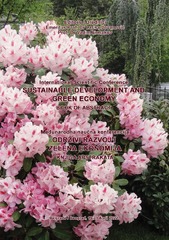Приказ основних података о документу
Determining the caloric potential of wooden plant species with the goal to protect and improve the environment
| dc.creator | Urošević, Jelena | |
| dc.creator | Trivan, Goran | |
| dc.date.accessioned | 2022-08-10T11:50:58Z | |
| dc.date.available | 2022-08-10T11:50:58Z | |
| dc.date.issued | 2022 | |
| dc.identifier.isbn | 978-86-89061-16-1 | |
| dc.identifier.uri | http://rimsi.imsi.bg.ac.rs/handle/123456789/1559 | |
| dc.description.abstract | Many countries are increasing the share of renewable and sustainable energy with the basic goal to reduce the volume of fossil fuels whose harmful impact on the environment is significant. The production and use of biomass that would be used for co-burning with fossil fuel are one of how the countries of the European Union and the United States are fighting against climate change. The most commonly used plant species is willow (Salix sp.) due to its multiple effects on environmental protection and improvement. The advantages they have are great, and only some of them are: efficient use of land combined with the growing demand for renewable energy sources. As fast-growing soft deciduous trees, willows show extremely good adaptability to the grounds where they grow and climatic conditions, which results in a high survival rate after planting and a high yield of wooden mass. This paper presents the results of the coburning of biomass of the indigenous species (Salix alba, clone B-44) with three samples of lignite in different ratios. Two samples of lignite were taken from the eastern part of MB Kolubara, while the third sample was taken from the western part of the Kolubara basin. The calorific values of biomass and lignite mixtures were determined using an IKA C 5003 calorimeter. Based on the obtained results, it can be concluded that even the minimum amount of the tested clone (5%), significantly increases the calorific value of lignite by an average value of 454 kJ/kg for a mixture of 5% added biomass and lignite. It was also found that the content of heavy metals in "contaminated" willows only slightly (by about 75 kJ/kg) reduces the thermal value of the mixture compared to a mixture of uncontaminated clone and lignite. The obtained results unequivocally indicate the possibility of using biomass obtained from willow in the electrical sector to increase the calorific value of lignite while reducing the amount of greenhouse gases emitted and recultivation of degraded land surfaces. | sr |
| dc.language.iso | en | sr |
| dc.publisher | Beograd: Ecologica | sr |
| dc.rights | openAccess | sr |
| dc.rights.uri | https://creativecommons.org/licenses/by/4.0/ | |
| dc.source | Sustainable development and green economy | sr |
| dc.subject | heavy metals | sr |
| dc.subject | biomass | sr |
| dc.subject | co-burning | sr |
| dc.subject | willow | sr |
| dc.subject | calorimetry | sr |
| dc.title | Determining the caloric potential of wooden plant species with the goal to protect and improve the environment | sr |
| dc.type | conferenceObject | sr |
| dc.rights.license | BY | sr |
| dc.citation.epage | 37 | |
| dc.citation.spage | 37 | |
| dc.identifier.fulltext | http://rimsi.imsi.bg.ac.rs/bitstream/id/3769/CaloricPotential.pdf | |
| dc.identifier.rcub | https://hdl.handle.net/21.15107/rcub_rimsi_1559 | |
| dc.type.version | publishedVersion | sr |

